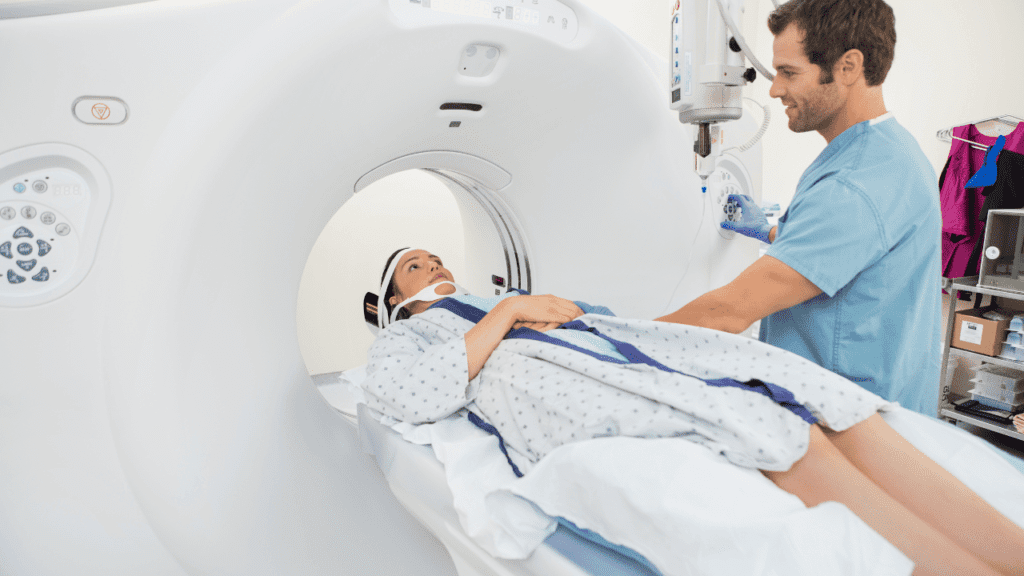Becoming a CT tech isn’t just a career move. It’s a commitment to mastering the science of diagnostic imaging—and making a real impact on patient lives.
“The best way to find yourself is to lose yourself in the service of others.” That quote from Gandhi? It rings especially true in healthcare.
So, how long does it actually take to become a CT tech? The answer isn’t as simple as a single number. It depends on your starting point. Are you a high school graduate looking to jumpstart your career? Or maybe you’re already a radiologic technologist aiming to specialize? Either way, you’re looking at anywhere from 1 to 4 years.
Let’s break that down. Fast-track certificate programs can take as little as 12 months. An associate degree takes around two years. Add licensing and certification prep into the mix, and the timeline stretches a bit more. But here’s the thing: it’s all achievable. And the demand? Growing—fast. According to the U.S. Bureau of Labor Statistics, employment of radiologic and MRI technologists is projected to grow 6% from 2022 to 2032.
This article will guide you step-by-step through what to expect, how to plan your path, and what you’ll need to succeed. No fluff—just real insights to help you make informed decisions.
Let’s get started!
What Is a CT Tech?
A CT (Computed Tomography) technologist, also called a CT technician or CT scan tech, is a medical imaging professional who operates CT scanning equipment. These machines create detailed images of internal body structures, allowing physicians to diagnose injuries, illnesses, and diseases more accurately.
CT techs work in hospitals, diagnostic laboratories, outpatient care centers, and physician offices. Their work requires precision, patience, and technical knowledge. It’s also deeply human. Patients often arrive anxious or in pain, and it’s up to the CT tech to guide them with empathy and professionalism.
Core Responsibilities
- Preparing patients for CT scans
- Operating complex imaging equipment
- Ensuring safety through proper shielding and positioning
- Collaborating with radiologists and physicians
- Documenting and managing patient records
The Educational Path to Becoming a CT Tech
1. Start With a High School Diploma or GED
Before anything else, a high school diploma or GED is your baseline requirement. A strong foundation in biology, physics, and mathematics is especially helpful.
2. Earn an Associate Degree (or Higher) in Radiologic Technology
Most CT technologists begin their careers as radiologic technologists (RTs). Enrolling in an accredited radiologic technology program is the typical first step. These programs are usually:
- Associate degrees (2 years)
- Bachelor’s degrees (4 years), though less common for entry-level positions
Accredited programs combine classroom instruction with clinical experience. You’ll study:
- Anatomy and physiology
- Radiologic physics
- Patient care procedures
- Medical terminology
- Radiation protection and safety
3. Get Licensed or Certified (State-Dependent)
Many states require RTs to be licensed. Licensing usually involves passing the American Registry of Radiologic Technologists (ARRT) exam. Check your state’s specific requirements on their health or medical board website.
4. Specialize in CT Imaging
Once you’re a registered RT, you can pursue a CT certification. This involves completing additional coursework and clinical training in CT scanning. Many hospitals offer on-the-job CT training if you’re already employed in radiology.
The ARRT also provides post-primary certification in CT imaging, which requires:
- Proof of ARRT certification and registration in Radiography
- Completion of a structured education program
- Clinical experience with specific procedures and competencies
- Passing the ARRT CT certification exam
How Long Does It Take?
Estimated Timelines Based on Your Path
- Starting from high school: 2 to 4 years total
- Already a certified RT: 6 to 12 months for CT specialization
- Fast-track certificate programs: ~1 year (for RTs adding CT)
Your timeline will depend on program structure, part-time or full-time study, clinical requirements, and whether you’re studying online or in-person.
Certification and Continuing Education
ARRT CT Certification
The ARRT certification exam for CT technologists covers everything from patient safety to image production. Maintaining your certification requires:
- 24 continuing education (CE) credits every two years
- Compliance with ARRT’s ethical standards
Continuing education helps CT techs stay updated with new technologies, safety protocols, and industry best practices.
Advanced Opportunities
After gaining experience, CT techs can pursue roles in:
- Supervisory or lead technologist positions
- Specializations in PET/CT or cardiac CT
- Education and training roles
- Imaging informatics and PACS administration
Job Outlook and Salary Expectations
CT technologists are in high demand, especially with an aging population and increased emphasis on preventive care. According to Bureau of Labor Statistics (BLS) data:
- Median pay for radiologic technologists (2023): $68,810 per year
- Top 10% earners: Over $100,000 annually
Salaries can vary based on experience, location, employer, and certifications held. Specializing in CT can increase your earning potential and open doors to new roles.
Essential Skills and Qualities
Being a CT tech isn’t just about knowing how to run a scanner. Here’s what you really need:
- Technical aptitude: You’ll work with sophisticated imaging systems
- Strong communication: Clear, calm guidance helps reduce patient anxiety
- Attention to detail: Accuracy is non-negotiable in diagnostic imaging
- Compassion and patience: You’re dealing with people at vulnerable moments
- Adaptability: Healthcare tech evolves—so should you
Pros and Cons of Becoming a CT Tech
Pros
- High demand and job stability
- Opportunity to make a direct impact on patient care
- Competitive salary
- Advancement opportunities in imaging specialties
- Varied work settings (hospital, outpatient, urgent care)
Cons
- Requires ongoing certification and education
- Physically demanding (long hours, standing, moving patients)
- Potential exposure to radiation (with proper protection)
- Emotionally taxing at times, especially with critical patients
Real-World Tips for Aspiring CT Techs
- Shadow a CT tech before committing to a program
- Join professional organizations like ASRT (American Society of Radiologic Technologists) to stay updated
- Practice good study habits early in your program—exams are tough
- Network with instructors and clinical supervisors for job opportunities
- Stay curious—new imaging techniques and AI integration are changing the field
Resources to Explore
- ARRT Official Website
- ASRT Career Center
- Bureau of Labor Statistics
- Local community college or university health sciences department
Final Thoughts
Becoming a CT tech takes time, effort, and a strong desire to serve. But it’s a path filled with meaning, growth, and opportunity. Whether you’re just starting out or thinking about advancing your radiologic career, this field offers a dynamic and rewarding future.
So take the leap. Invest the time. The road might be a few years long—but the payoff? Totally worth it.




